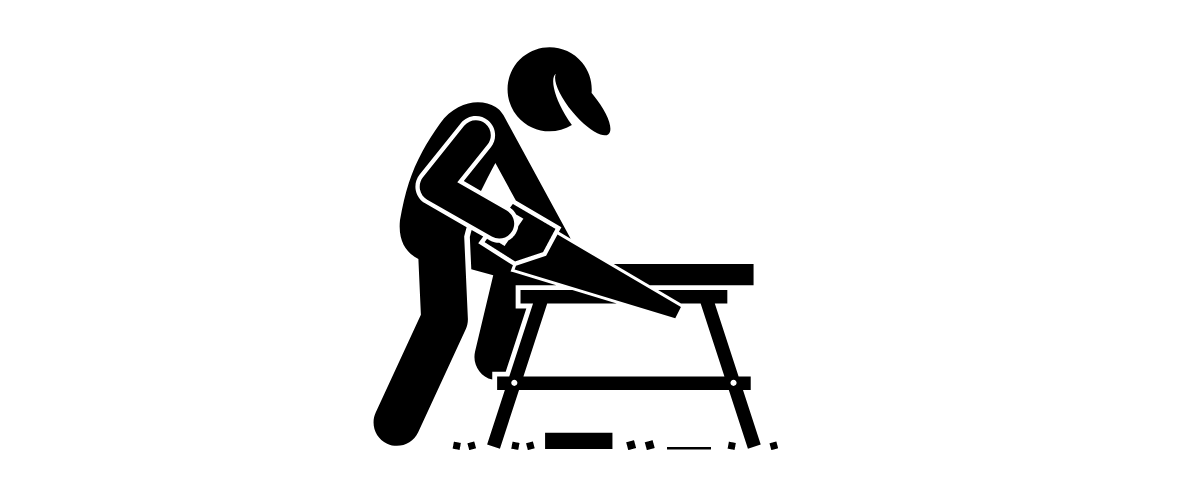
Because they are affordable, customizable, easy to clean, and long-lasting, butcher block countertops are becoming more and more popular. Butcher’s block is a style of assembled wood (often hard maple, teak, birch, or walnut) that is used as heavy-duty chopping blocks, tabletops, and cutting boards.
Originally used primarily in butcher shops and meat processing plants, it has become increasingly popular for residential use. Butcher block is traditionally made with end grain, though more recently it has also included edge grain.
Additionally, butcher blocks have in many rights surpassed stone and laminate countertops in demand. This has generated a new industry in the kitchen design field and numerous furniture manufacturers and hardwood flooring companies are entering into the production of butcher blocks and butcher block countertops.
This is partly because the countertops can be constructed from residual wood that would otherwise be thrown away.
Though butcher block is easier to clean, it must be cleaned differently and more often than other countertops. Maintaining the wood properly is essential to making it last.
In order to prevent mold from forming, the wood needs to be cleaned thoroughly, especially if it is prone to moisture.
As the wood expands and contracts, the seams may lose their integrity. In order to preserve the block’s rich color and to protect against water damage, you must oil it regularly. Properly caring for the butcher block is a multi-step process:
- First, any foreign material should be completely removed.
- Second, it should be disinfected with vinegar (or in extraordinary cases, bleach).
- Third, the material should be allowed to dry well.
- Fourth, the block should be refreshed with mineral oil or other food safe sealant.
Now that we’ve covered what a butcher block is and how to maintain it properly, let’s get into how to install one. Before we get to that, make sure to read all the way through to the end, as we also include some advice on what not to do when installing a butcher block countertop.
What You Will Need
- Tools and Equipment
- Cordless drill and drill bits
- Tape measure
- Circular saw
- Speed square
- Portable work light
- Clamps
- Table saw or a circular saw equipped with a track system for precise long cuts
- Mineral oil
- Clean cotton rags
- Long strips of cardboard and painter’s tape or 1/8-inch to 1/4-inch hardboard project panels
- Utility knife
- Oscillating electric sander
- Eye and ear protection
- Electric belt sander (optional)
- Hot glue gun (optional)
- Strong rare-earth magnet (optional)
- Materials
- Raw butcher block slab
- (8) 1.5-inch zinc-plated corner braces
- (32) 1-inch brass Phillips drive wood screws
- One-by-ten board (optional)
Create a Template
One way of creating a template is with long strips of cardboard, each strip with a perfectly straight edge. However, it is usually worth shelling out a bit more to purchase a thin, inexpensive type of wood called a project panel. This is because wood is less flexible than cardboard.
Lay out the strips on top of your existing countertop or on top of the kitchen base cabinets to form the perimeter or outside of the countertop. You should then connect the strips using hot glue.
Cutouts can be marked off by the template strips. Make sure to connect any cutout templates to the larger perimeter cutout. Use at least two strips when connecting them.
Cutting the Butcher Block Countertop
For long and precise cuts of large materials, it is wise to use a table saw, or a circular saw equipped with a track system. However, if cost is a concern, it is possible to use a straight board as your guide for a circular saw.
One way to do this is to use a one-by-ten pine board as a guide. Make sure that the board is no thicker than 1-inch so that the circular saw’s motor can pass over it. The ample 10-inch width assures that the saw will not hit the clamps holding the board to the countertop.
Since backsplashes always overlap the countertop, any imperfect cuts will be concealed by the backsplash.
Installing the Butcher Block Countertop
- Place the butcher block countertop on top of the base cabinets.
- Have someone help you by holding down the countertop securely or place a heavy, padded weight on top.
- Access the cabinet from underneath, bringing your portable work light, braces, screws, and drill with you.
- Attach the L-shaped corner braces from the bottom of the butcher block countertop to perpendicular wood elements in the cabinets.
- Attach at the ends of the countertop.
- Most base cabinets will have wood braces running at one or more points through the middle of the cabinet on longer cabinets and on sink-base cabinets. Attach the braces to these elements, as well.
- It can be difficult to drill upside-down while holding a bracket and drill. One trick that frees up a hand is to place a strong rare-earth magnet on the countertop, directly above the brace. This holds the brace steady, allowing you to better navigate the drill and screws.
Sanding and Finishing the Countertop
Use an electric sander with fine-grit sandpaper to smooth the surface of your butcher block countertop before sealing. Lower intensity oscillating sanders are best for surfaces that are already in good condition.
The wood-scouring power of a belt sander is well-suited to rougher surfaces.
Butcher block countertops sealed with polyurethane will scratch and eventually lose their coating. One tip is to forgo the heavy sealants and stick with mineral oil only. Here is the process you may follow:
- Rub the oil into the top surface with clean cotton rags.
- With sinks, water can soak into the sides of the cutout. Because of this, make sure to apply oil around the inside and bottom of any sink cutouts before installing the sink.
- Oil or another type of sealant will stop the water from soaking in.
You should also use mineral oil for continued maintenance of your butcher block counter to seal the pores and keep its surface glossy.
What Not to Do
- Do not install the butcher block over a solid underlayment. This will lead to an imbalance between the top and bottom, which could lead to cupping or warping of the top. If your application has a solid underlayment, be sure to cut large holes in it to allow the free flow of air to the bottom of your block.
- Do not apply glue or silicone your top down, as this will prohibit expansion and contraction. As we’ve discussed, butcher block countertops need room to expand and contract throughout their life cycle.
- If there are joints in your countertop, do not glue them; use draw bolts instead
- Do not mount a butcher block countertop directly to a solid-topped base unit without allowing a 1/16″ air space between the butcher block top and said solid-topped base.
- When tightening your screws, be extremely careful not to overtighten them. You should still be able to move the fender washer if you use a little force. If you cannot move the fender washer, your screw is too tight and should be loosened until you can wiggle the fender washer slightly. As previously covered, this process allows the butcher block to expand and contract with environmental factors and is paramount to its proper installation.
In addition to butcher block and maple countertops, OnePointe Solutions offers a vast array of commercial furniture options. From science laboratories, to pharmaceutical cleanrooms to office furniture, from ordering, to planning, to installing and even cleaning up, we have what you need to make your workspace work for you.
Need Maple Block Countertops?
We can help with that! Contact us by phone at (866) 222 – 7494 or through our Contact Form and we will gladly assist you to get maple block countertops for your facility.


